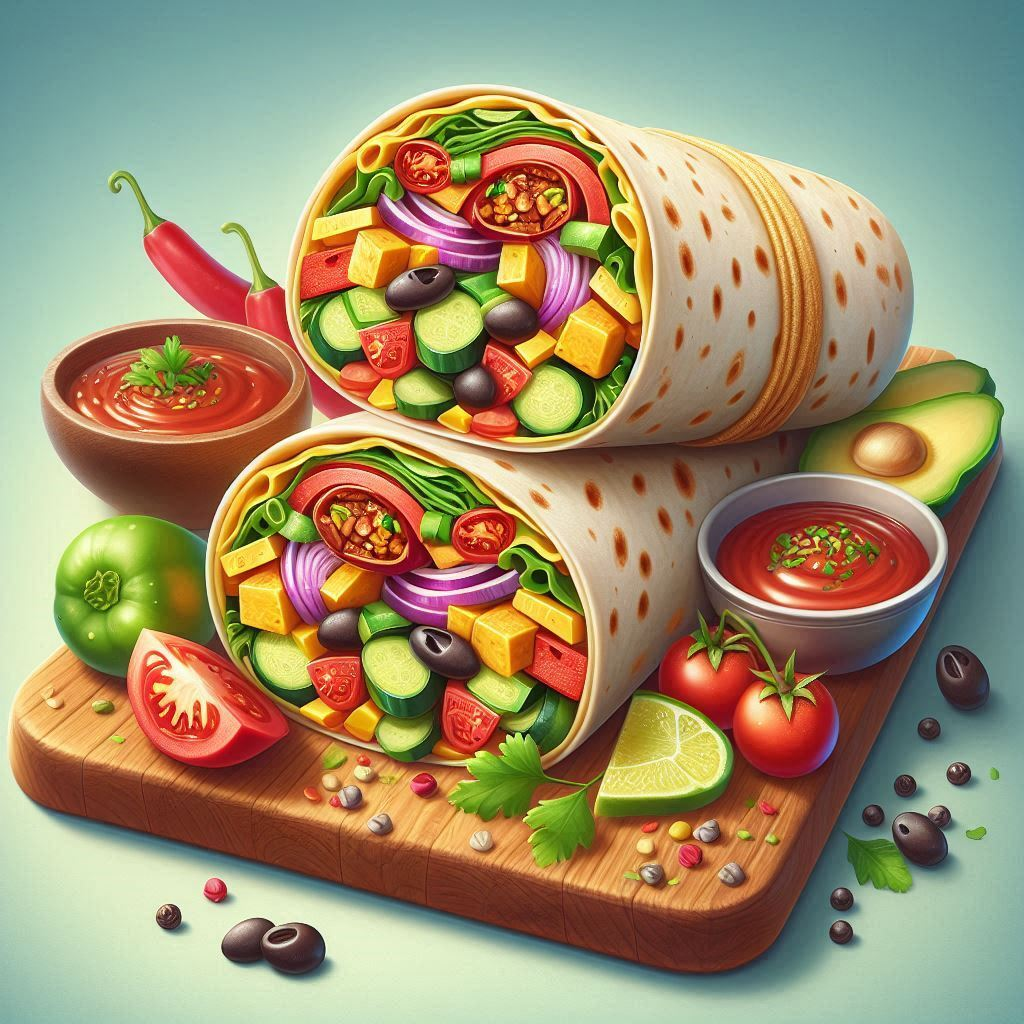
A Journey Through Time: The Vegetarian Burrito
The vegetarian burrito, a beloved staple of the modern American diet, boasts a surprisingly rich history, interwoven with the evolution of Mexican cuisine and the rise of vegetarianism. Let’s embark on a culinary journey to explore its roots and uncover the secrets of its preparation.
From Humble Beginnings:
The burrito itself, a simple yet versatile dish, traces its origins back to Northern Mexico, particularly the state of Chihuahua. The name “burrito” derives from the Spanish word “burro” (donkey), likely referencing the small, cylindrical shape of the dish resembling a donkey’s load. Early burritos were typically filled with simple, readily available ingredients like beans, rice, and meat, wrapped in corn tortillas for a portable and satisfying meal.
The Vegetarian Revolution:
As vegetarianism gained traction in the 1960s and 70s, the burrito found a new purpose. Vegetarian diners, seeking alternatives to traditional meat-filled options, embraced the burrito’s versatility as a platform for creative, plant-based fillings. This marked the birth of the vegetarian burrito, a dish that has since become a cornerstone of vegetarian and vegan cuisine.
A Culinary Tapestry:
The beauty of the vegetarian burrito lies in its endless customization. While the core ingredients remain consistent – beans, rice, and vegetables – the possibilities for flavor combinations are boundless. Here are some common elements found in vegetarian burritos:
- Beans: Black beans, pinto beans, and kidney beans are all popular choices, adding a hearty texture and protein boost.
- Rice: Brown rice, white rice, or quinoa provide a fluffy base for the other ingredients.
- Vegetables: The choice of vegetables is vast, from freshly chopped onions, bell peppers, and tomatoes to roasted vegetables like corn, zucchini, and eggplant.
- Salsa and Sauces: Pico de gallo, salsa verde, and guacamole add vibrant flavors and a touch of heat.
- Cheese: While not strictly vegetarian, shredded cheese is a common addition, offering a creamy and savory element.
Preparing the Perfect Vegetarian Burrito:
The preparation of a vegetarian burrito is a simple yet rewarding process. Here’s a step-by-step guide:
- Prepare the fillings: Cook the beans according to package instructions. Prepare the rice by boiling or using a rice cooker. Chop the vegetables into bite-sized pieces and sauté or roast them to your liking.
- Assemble the burrito: Lay a large tortilla flat on a surface. Add a generous portion of beans, rice, and vegetables, leaving some space at the edges. Top with salsa, guacamole, and cheese if desired.
- Wrap and enjoy: Fold the bottom edge of the tortilla over the filling. Fold in the sides, then roll the burrito tightly from the bottom up. Enjoy your delicious vegetarian burrito!
A Global Phenomenon:
The vegetarian burrito has transcended its humble origins, becoming a beloved dish around the world. From street food vendors in Mexico to restaurants in the United States and Europe, the vegetarian burrito has found a home in diverse culinary landscapes. Its popularity reflects the growing demand for flavorful, plant-based options that are both satisfying and easy to enjoy.
A Culinary Legacy:
The vegetarian burrito is a testament to the adaptability and creativity of cuisine. It represents a harmonious blend of traditional Mexican flavors with the modern desire for healthy, vegetarian options. As the culinary world continues to evolve, the vegetarian burrito stands as a timeless classic, a symbol of deliciousness and inclusivity.



